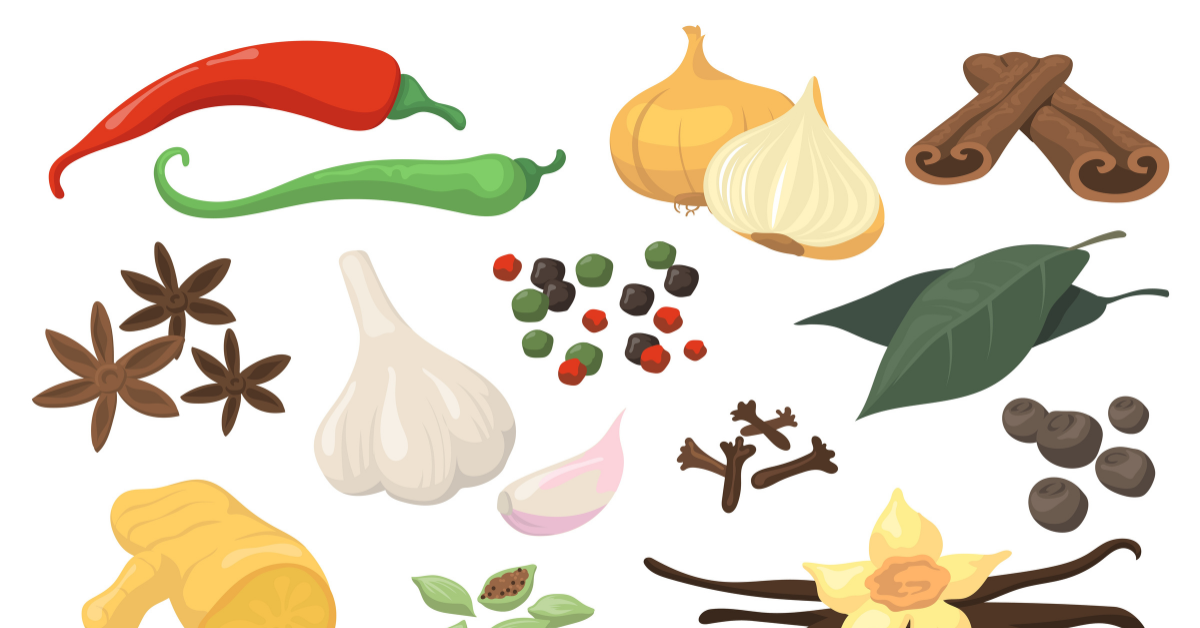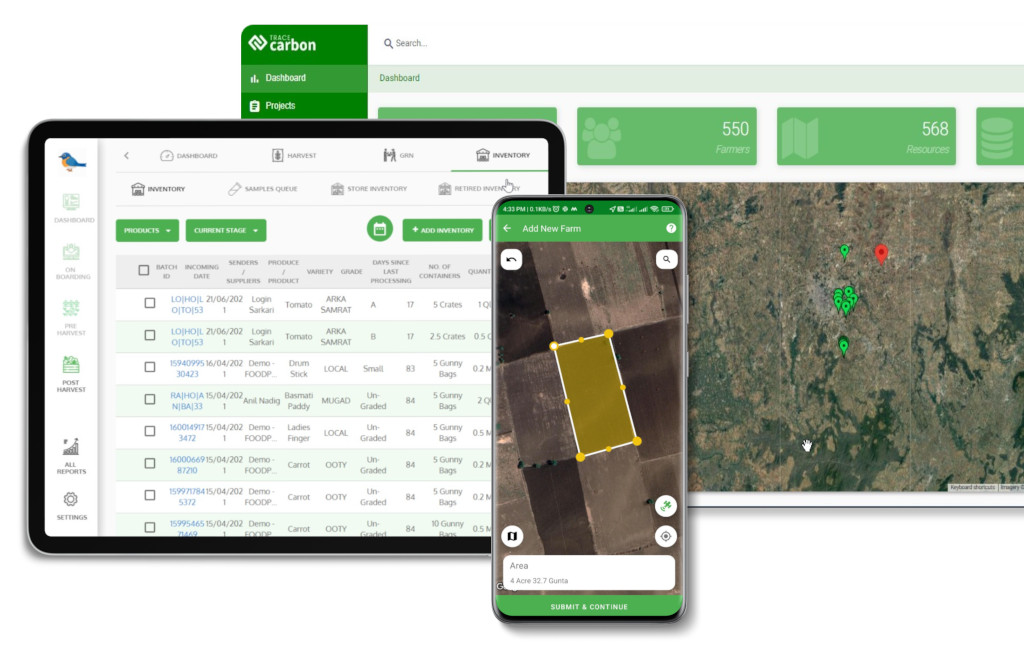Contact: +91 99725 24322 |
Menu
Menu
Quick summary: Discover how sustainable farming practices in spices — from agroforestry and organic inputs to digital traceability — build climate resilience and long-term market competitiveness for spice producers.

Did you know 80% of the world’s spices are grown by smallholder farmers who are highly vulnerable to climate change?
Sustainable farming practices in spices focus on methods that improve yields while protecting ecosystems and farmer livelihoods. Key approaches include agroforestry and shade-grown cultivation to preserve biodiversity, organic inputs to reduce chemical dependency, intercropping and crop rotation for soil health, and efficient water management to conserve resources. These practices not only reduce greenhouse gas emissions but also build climate resilience by making spice crops less vulnerable to erratic weather. For buyers, they ensure traceability, compliance with regulations like EUDR, and access to premium markets, making sustainable spice farming both an environmental and economic necessity.
Sustainable methods protect farmers from unpredictable rainfall, rising temperatures, and soil degradation. Premium markets and consumers increasingly prefer sustainably sourced spices. Regulations like EUDR or Fair Trade certifications require traceability and proof of responsible sourcing. This sets the stage by showing that sustainability is not optional; it’s essential for both farmers and buyers.
By combining traceability, farm management, and digital compliance, TraceX solutions go beyond observation to actively enable sustainable transformation. Blockchain-powered traceability ensures every spice can be tracked from farm to shelf, building trust and transparency across the supply chain. Farm management tools give real-time insights into farmer activities, soil health, and input use, helping smallholders adopt practices that strengthen yields and resilience. Meanwhile, digital compliance systems automate data capture for sustainability reporting and audits, making regulatory readiness seamless. Together, these solutions position us as a true partner in building climate-resilient and sustainable spice supply chains.
Key takeaways
Sustainable spice farming refers to cultivating spices like pepper, cardamom, turmeric, and cinnamon in ways that protect natural resources, enhance soil fertility, and ensure fair livelihoods for farmers without compromising future productivity. It’s about balancing profitability, planet, and people in every stage of cultivation.
In practice, sustainable spice farming combines traditional knowledge with modern, climate-smart techniques such as:
Once considered an ethical choice, sustainable spice farming is now a business imperative. Climate volatility is reducing yields and threatening farmer incomes, while new regulations like the EU Deforestation Regulation (EUDR) and Corporate Sustainability Due Diligence Directive (CSDDD) are pushing buyers to prove responsible sourcing.
For spice exporters and brands, sustainability is no longer about good PR; it’s about market access, resilience, and risk mitigation. For farmers, it means healthier soils, better yields, and long-term livelihood security. Every pinch of turmeric or pepper carries a story of the soil it grew in, the rain that fed it, and the farmer who nurtured it. Sustainable spice farming ensures that the story is one of balance and regeneration, not exploitation and loss. When farmers adopt climate-smart practices and traceable systems, they not only grow better spices, they grow trust.
Sustainable farming practices in spices go beyond protecting the environment; they build resilience, unlock premium markets, and empower smallholder farmers to thrive in a changing climate.
Discover the best practices shaping the future of sustainable agriculture
Want to know how technology is transforming spice sustainability?
Building a truly sustainable spice supply chain starts at the farm, where everyday decisions on soil, water, and crop management shape not just yield, but the planet’s future. Below are the core sustainable practices transforming spice cultivation into a model for climate resilience and ethical sourcing.
In regions like Kerala, Coorg, and Sri Lanka, farmers cultivate pepper, cardamom, and vanilla beneath the canopy of native trees. This practice, known as agroforestry, mimics the natural ecosystem.
Agroforestry isn’t just “green”, it’s smart economics. Trees provide secondary income (fruit, timber, carbon credits), turning sustainability into a long-term investment for farmers.
Sustainable spice cultivation thrives on nature-based nutrition. Farmers are shifting from synthetic fertilizers and pesticides to compost, green manure, and biofertilizers.
The global “clean label” trend means consumers now look beyond flavour, they want authenticity. Organic spice farming lets buyers trace every pinch of turmeric or pepper back to a healthy, chemical-free ecosystem.
Diversifying crops is nature’s insurance policy. Farmers often intercrop spices with coffee, cocoa, or fruit trees, or rotate them seasonally with legumes or cover crops.
Intercropping turns monoculture farms into micro-ecosystems that feed families, restore soil, and create multiple revenue streams. It’s how smallholders move from surviving to thriving.
Water-smart agriculture is the backbone of sustainable spice farming. Techniques like drip irrigation, mulching, and contour farming are revolutionizing how farmers manage scarce water resources.
With climate change making rainfall unpredictable, every drop counts. Water efficiency isn’t just conservation; it’s climate insurance for farmers.
The future of spices lies in climate-smart agriculture, an approach that reduces emissions while improving yields.
Imagine a spice industry where every farm becomes a micro carbon sink. By integrating data-driven tools, sustainable spice farming can move from “doing less harm” to actively restoring the planet.
Sustainability in spices isn’t just about preserving nature, it’s about empowering farmers, future-proofing supply chains, and aligning agriculture with global climate goals. Every sustainable practice, from shade-grown pepper to carbon-tracked cardamom, tells a story of balance, between people, profit, and the planet.

While the promise of sustainable spice farming is compelling, the path to achieving it isn’t without obstacles. For thousands of smallholder farmers, the transition from conventional to sustainable practices can be both technically complex and economically demanding. Understanding these barriers is key to unlocking scalable change.
Many spice farmers still lack access to quality organic inputs, improved seed varieties, and scientific guidance on sustainable methods. Without hands-on training, practices like drip irrigation, composting, or integrated pest management remain out of reach.
Knowledge gaps, not willingness, are the real barrier. Most farmers want to grow sustainably; they just need accessible tools, localized training, and real-time agronomic support.
Imagine if farmers could access agronomic insights on their phones in their native language, sustainability would no longer be a luxury; it would be the norm.
The spice sector is dominated by small and scattered farms, each managing just a few hectares. This fragmentation makes it difficult to standardize practices, aggregate data, or build collective traceability systems.
Fragmentation isn’t just a logistical issue; it’s a visibility problem. Without consolidated data, buyers can’t verify compliance, and farmers can’t prove the value of their sustainable practices.
Digital platforms can act as virtual cooperatives, connecting dispersed farmers under one transparent system, scaling impact without centralizing control.
Certifications like Organic, Fairtrade, or Rainforest Alliance open doors to premium markets, but for smallholders, the cost of audits, documentation, and compliance can be overwhelming.
Compliance shouldn’t punish the farmer for doing the right thing; it should reward them. The future lies in data-driven certifications, where digital traceability automates proof and lowers costs.
Imagine if your sustainability proof came from the data you already generate in the field, real-time, transparent, and audit-ready.
This is where technology changes the story.
Together, these solutions turn the biggest barriers, fragmentation, cost, and complexity into growth opportunities. They make sustainability scalable, verifiable, and profitable for every actor in the spice value chain.
The real challenge isn’t farmer resistance, it’s system inefficiency. With the right digital infrastructure, sustainable spice farming can evolve from scattered initiatives to a connected, data-driven ecosystem that benefits farmers, buyers, and the planet alike.
Jayanti Herbs and Spices, a global leader in spice and herb exports, faced the classic challenge: how to coordinate operations across numerous farms, technicians, and supervisors while upholding traceability and sustainability standards.
With TraceX’s digital hierarchy management, they aligned all stakeholders — from field technicians through project supervisors to admins — onto one platform. The result? Clear accountability, faster compliance reporting, and end-to-end operational clarity across their Turkish plantations.
Sustainable spice farming isn’t just about good agricultural practices — it’s about verifiable action, measurable outcomes, and trusted data. That’s where TraceX’s digital sustainability platform transforms intent into impact.
Our end-to-end solution empowers every actor in the spice value chain — from smallholder farmers to exporters — to adopt, monitor, and report sustainable practices with ease and accuracy.
TraceX’s blockchain traceability engine ensures that every batch of spice, whether it’s turmeric from Erode or pepper from Wayanad, can be tracked from farm to fork.
Transparent sourcing builds trust, eliminates greenwashing, and earns premium buyer confidence.
TraceX’s mobile app turns sustainable practice tracking into a simple daily habit for farmers and field staff.
Digitized farm data improves yields, reduces costs, and helps farmers comply with sustainability standards effortlessly.
Our integrated carbon calculator measures and reports emissions across the spice value chain from farm operations to logistics.
Spice exporters can demonstrate measurable climate impact and move toward net-zero value chains.

Sustainable farming practices in spices go beyond protecting soil and water — they strengthen farmer livelihoods, preserve biodiversity, and ensure global market resilience. By embracing agroforestry, organic methods, digital traceability, and carbon-smart farming, spice growers can build ecosystems that thrive in changing climates. The path to climate resilience begins with data, transparency, and collaboration — and technologies make that transformation measurable and scalable.
Dive into our latest insights on how technology, transparency, and farmer empowerment are transforming the global spice industry.
Read the Blog on Spice Supply Chain
See how digital tools are helping farmers monitor soil health, optimize inputs, and meet sustainability goals — one field at a time.
Explore Farm Management Solutions
Learn how ethical sourcing practices and traceability are redefining global agri trade — from farm to fork.
Read More on Ethical Sourcing in Supply Chains
Sustainable spice farming focuses on reducing chemical inputs, conserving water and soil, promoting biodiversity, and ensuring fair farmer livelihoods — all while maintaining consistent yields.
Digital platforms help farmers monitor crop health, optimize resources, and document practices for certification and traceability — key to accessing premium, ethical markets.
Traceability provides end-to-end visibility, ensuring every batch of spices can be linked back to verified, sustainable farms — enhancing transparency, compliance, and consumer trust.
